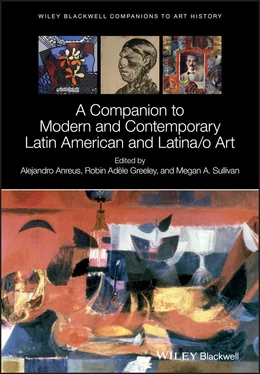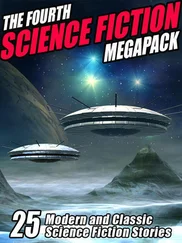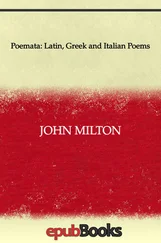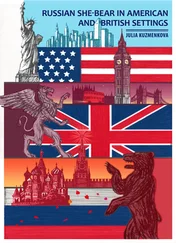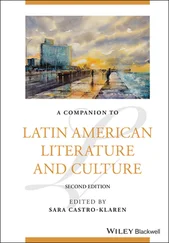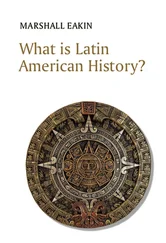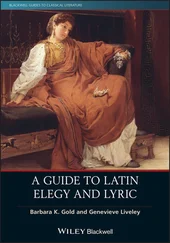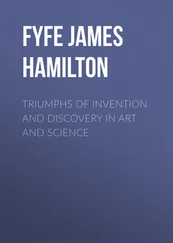This distinct periodization leads to the questions: What is the time of the modern? Of the contemporary? Making these inquiries from the point of view of Latin America allows us not only to elucidate conditions within the region but also to clarify the historical underpinnings of a Western modernity long presented as “universal” in conventional scholarship. “When was Latin America modern?” query historians Nicola Miller and Stephen Hart (2007), plumbing an ongoing debate over the region's often contradictory mix of premodern, modern, and postmodern socioeconomic, political, and cultural forms. In his important 1995 essay “Modernity after Postmodernity,” anthropologist Néstor García Canclini argues that conventional linear temporalities, which view postmodernity as replacing modernity (and modernity as replacing the traditional), are undone when considered from the perspective of Latin America. “Rarely,” he writes, “did modernization replace the traditional or the ancient,” resulting in a modernity characterized by a “multi‐temporal heterogeneity” generated out of the “contradictions between modernism and modernization” endured by the region. In concert with Brazilian scholar, Roberto Schwarz, García Canclini notes the challenges but also the effervescent dynamism of cultural responses to this situation. Cultural production becomes “an intellectual exercise” aimed at “absorbing the conflictive structure of society, its dependence on foreign models and the [transformative utopian] projects to change it,” producing “some of our greatest literature” and art (García Canclini 1995, pp. 28, 30).
In bringing these new studies of key artists, movements, and critics together, our aim is not to chart a new definition of Latin American or Latina/o art but rather to propose that, collectively, they can help us rethink our understanding of the relationship of modernism and modernity and asymmetries of power and visibility in an increasingly global art world.
*
**
This book, divided into five chronologically organized parts and a final one dedicated to methodological approaches and debates, charts major movements, critics, and approaches in Latin American and Latina/o art since 1910. These divisions are meant to demarcate major shifts in how art was positioned with regard to questions of national and ethnic identity, cosmopolitan modernisms and international art circuits, revolutionary movements, development, Cold War politics, and globalization.
Thus the book's first part, for example, addresses redefinitions of national identities and the confrontation between cosmopolitanism and nationalism, as well as their paradoxical fusion. Addressing, among other topics, the artistic flourishing across medium in postrevolutionary Mexico, the Havana vanguardia , and José Carlos Mariátegui's conception of the relation of aesthetics and politics, these chapters collectively examine the meaning of the nation as both a cultural and political space and efforts to forge national identity as an anti‐imperial, and even revolutionary, force. These pressures around defining the nation – who belonged to it and its potential as a source of both differentiation and comparison – deeply affected the development of the avant‐garde art movements that emerged in major urban centers of the region. It can be argued that these various avant‐garde groups, although largely independent, were united by what Argentine‐Colombian critic Marta Traba defined as “a national art of emergency (third world) against a national art of essences and synthesis (developed countries). A national art of emergency not only states an ontological problem, but also addresses practical functions and is not very far from being a form of activism” (Traba 1979, p. 45). Also raised here is an issue that will reappear throughout later sections: the tension between aesthetic experimentation and social agendas, especially with regard to the representation of indigenous peoples and the descendants of enslaved Africans. Essays throughout the volume investigate the conflictive agendas around definitions of indigenous art – who gets to name it as such and what frameworks are used to specify it; its symbolic, functional, economic and aesthetic attributes; its complex mix of traditional and nontraditional − and their relationship to the equally conflicted concept of indigenismo used as a tool of repression or, antithetically, of social empowerment.
Accordingly, the essays in this volume critique both the “time” and the “place” of the modern by considering how Latin American cultural production consistently grants a perspective onto modernity substantively different from, yet indelibly linked to, that of Europe and the United States (and through them, those of Africa and the East). The same holds true for considerations of the contemporary. The authors investigate Latin American contemporary art both in its own right and as a lens for comprehending the major shifts in artistic production worldwide since World War II.
Part II, on the years between the end of World War II and the Cuban Revolution, pits these still‐unresolved efforts to define the nation against competing international ideas, art, politics, and history and situates these changes within the Cold War's reshaping of the world order. Central to this section are the rhetoric and consequences of development. Governments in the region implemented policies aimed at stimulating an accelerated industrialization and, consequently, at “catching up” with the United States and Europe. In this context, artists, architects, and critics took on the question of internationalization, in terms that revealed its inherent contradictions.
If “Latin America” proves a moving target, then the very definition of art likewise changed dramatically over the course of the historical period covered by this book. A wholesale postwar reevaluation of the notions of painting, sculpture, drawing, and architecture gave rise to a widespread view of art not as a discrete object, but as what the influential critics Ferreira Gullar and Juan Acha termed the “nonobject” – a concept whose profoundly innovative notions of subjectivity and collectivity brought together aesthetics, politics, and psychoanalytic theories of subjectivity and affect. The upheavals of art and society in the 1960s and 1970s are addressed through a variety of topics in the third part: the breakdown of medium specificity and the dematerialization of the art object; the rise of participatory propositions; the growing internationalization of Latin American art and the contingent rise of institutions, museums, and events such as the São Paulo Biennial. The post‐World War II sections thus trace a decisive shift not only in the look and form of art objects but also in the concept of political subjectivity itself – a change in the nature of political agency that was often actively facilitated by and through artistic practice. These are read against the political and social turmoil of the Cuban Revolution and the Cold War, the rise of new guerrilla movements throughout the 1960s and 1970s, the 1968 student protests, and polarization of the political spectrum across Latin America.
The fourth group of texts examines the rise of conceptual strategies and new media in the 1970s and 1980s in relation to both the repressive right‐wing dictatorships and the retreat of democracy throughout the region. Essays explore a variety of conceptualisms that reach back not to the ontological crisis of modernism prompted by World War II, but to 1959, the rise of dependency theory, and Latin America's colonial past as historically generative markers, aimed at producing aesthetic gestures with the capacity to disrupt dominant discourses in order to open them to dialogical modes of exchange.
The final two parts deal with the most recent work in Latin American and Latina/o art, focusing on the rise of identity politics, the problematic repercussions of globalization on this art, the burgeoning art market (dealers, auctions, art fairs, and collectors), and exhibitions under the economic effects of neoliberalism. Essays in the latter sections of the book argue for the exponential growth in recent decades of what Peruvian‐US scholar José Falconi here calls the “cartography of contemporaneity” (p. 528), in which Latin America's current assertiveness on the geopolitical stage has broken down previous tendencies to marginalize the region as peripheral and never‐quite‐modern. Now identified in temporal terms as part of the contemporary world, Latin America participates in – and often guides – a new space–time system of cultural production under late capitalism that promises inclusion beyond the traditional canon of (Western) modernism. This central and active role has also opened up the commercialization and commodification of Latin American cultural goods in the market at large. Yet although Latin American and Latina/o cultural production have thus been afforded a higher level of prestige than they have ever enjoyed, this situation has also complicated efforts to define the categories of “Latina/o” and “Latin American art.” Inasmuch as globalization has succeeded in establishing a predominant artistic lingua franca – that of postminimalist and postconceptual art – any traces of nationalism, localism, or identity art have been deemed increasingly outmoded within that global panorama. Indeed, it may now be more productive to understand “Latin America” less as a unified geopolitical entity than as a methodological category for organizing information, and art stemming from the region not as an expression of an essential identity but as a means of generating distinctive insight into current aesthetic practices worldwide.
Читать дальше
